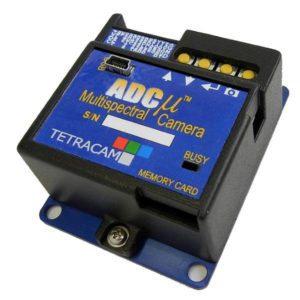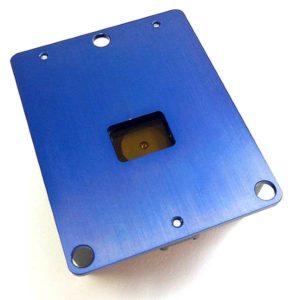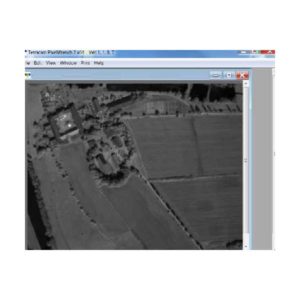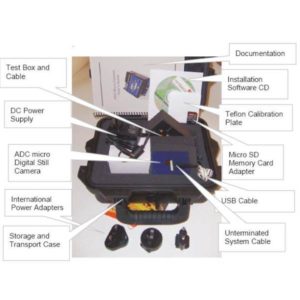Overview
At 90 grams, the ADC Micro extends the power of advanced multi-spectral imaging to small Unmanned Aircraft Systems. In so doing, Tetracam’s smallest multi-spectral imaging marvel makes this powerful technology once only accessible via satellites practical for use by agricultural, industrial and scientific users located around the world.
The system features 16 GB standard storage, fast parallel processing, low power consumption, and simple menu-organized configuration and control, the system captures visible light wavelengths longer than 520 nm and near-infrared wavelengths up to 920 nm.
Encased inside the bottom of the unit (see image at left), the ADC MIcro possesses a high-quality 8.43 mm lens. The lens focuses the light that enters the camera on to the system’s multi-spectral image sensor.
Sensors and Filters
Three filters atop the sensor limit the radiation that enters it to bands of green, red and near-infrared radiation equivalent to Landsat Thematic Mapper bands TM2, TM3 and TM4. These bands are the basis for the standard “false color” composite images that have become associated with multi-spectral imagery. They provide excellent early warning signs of plant stress and their use as indicators of other specific plant and soil conditions has been documented by scientists for decades.
The ADC Micro sensor features extremely high visible and NIR spectral fidelity. The sensor gathers the radiation that passes through its filters to form a multi-spectral digital image made up of 2048 x 1536 pixels.
Image Memory
This image is saved in an included 16 GB Micro SD memory in one of three native file formats specified by the user (identified as 10 bit DCM lossless, 8 bit RAW, or 10 bit RAW).
Images are stored along with metadata such as GPS coordinates and/or attitude information (pitch, roll and yaw) that is sent to the system through the ADC Micro’s serial interface (see I/O connections described below). Metadata helps users establish the ground location of each image.
The ADC Micro’s SD memory is easily accessible by the user. After missions are completed, users remove the Micro SD memory from the camera and transfer its contents to a computer equipped with PixelWrench2, the software included with all Tetracam systems.
PixelWrench2
PixelWrench2 provides color processing of Tetracam RAW and DCM files, complex batch processing tools, a comprehensive suite of image editing tools and the ability to extract various vegetation indices such as NDVI from the captured images.
In addition to indicating plant stress, vegetation indices such as NDVI enable users to deduce information such as biomass, chlorophyll concentration in leaves, plant productivity and fractional vegetation cover as well as predict crop yield.



